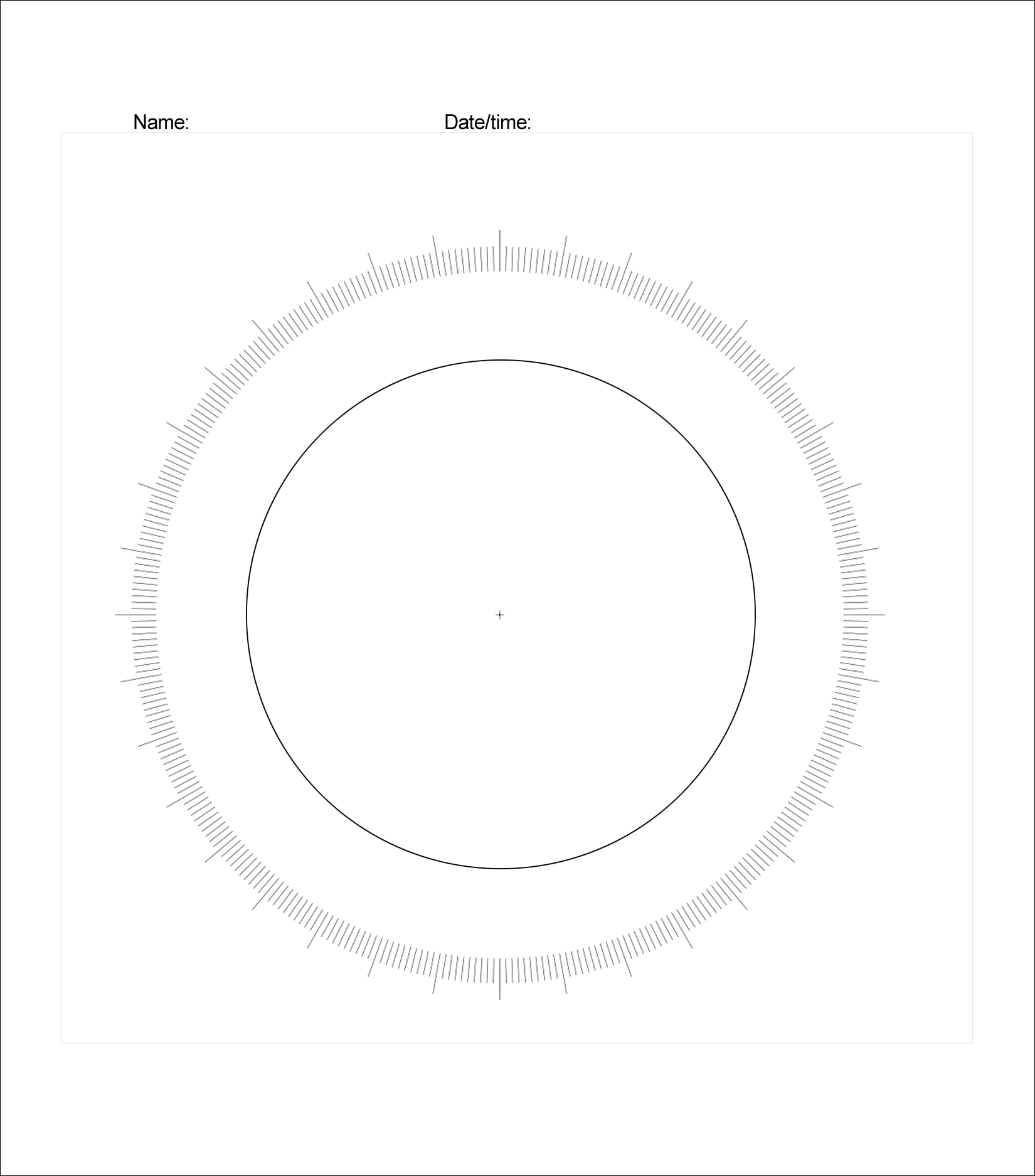So in my example above you put in 3 for the month and 27 for the day and you get 26 degrees (yellow area). If the value is positive
you travel around the circle to the
right to find the sun north (negative values go to the left). Unfortunately in this example I used 23 degrees because I didn't know about the
sun tilt. So I showed the sun north point 3 degrees off. This error is actually visible below. Anway, repeat the measurements for
the next day or a few days later and then plot both on a full grid. You need to choose a grid based on the B0 value (green area). For my example
date (march 27) you get -7 degrees.
But I stupidly chose the +7 grid. Obviously it isn't *that* critical but if I
chose the correct grid I may have gotten better results. Here are grid files (aka stonyhurst grids) for some B0 values. The grid for
-3 is upside-down for the grid for B0 of +3 so there are only 7 grids:
Stonyhurst B0 Grids
b0 is 0 (not available - email me if you want this. Don't want to bother if not a single person ever asks for it)
b0 is 1 or -1 (not available - email me if you want this. Don't want to bother if not a signle person ever asks for it)
b0 is 2 or -2 (not available - email me if you want this. Don't want to bother if not a signle person ever asks for it)
b0 is 3 or -3
b0 is 4 or -4
b0 is 5 or -5
b0 is 6 or 7 or -6 or -7
I was very careful to make sure these grids are the *exact* same size as the sun image on the sunspotter.
I got the originals for these grids here so you can make your own for other sized telescopes or to use with software (rotate upside down to get negative B0):
0 degrees
1 degrees
2 degrees
3 degrees
4 degrees
5 degrees
6 degrees
7 degrees


